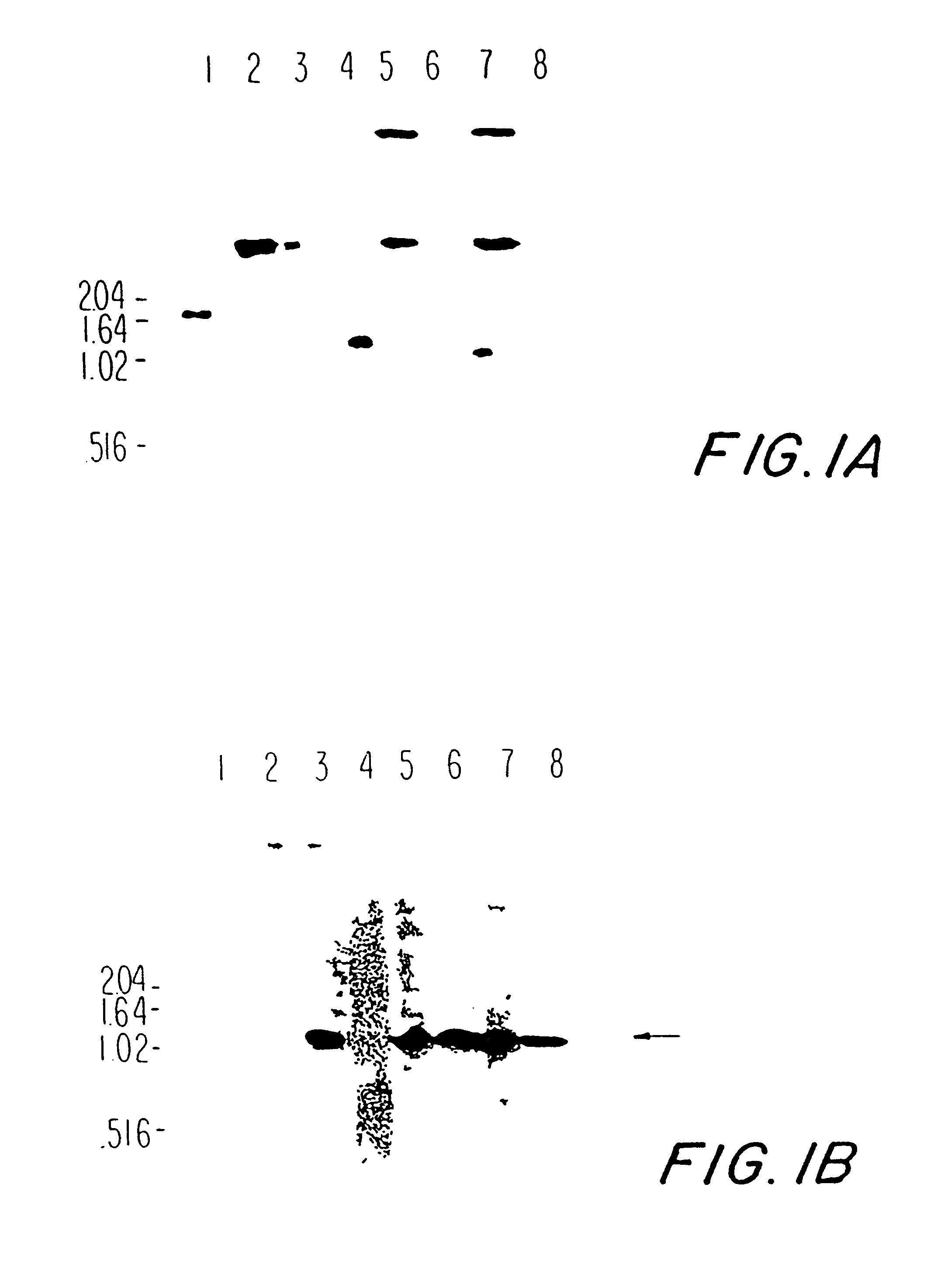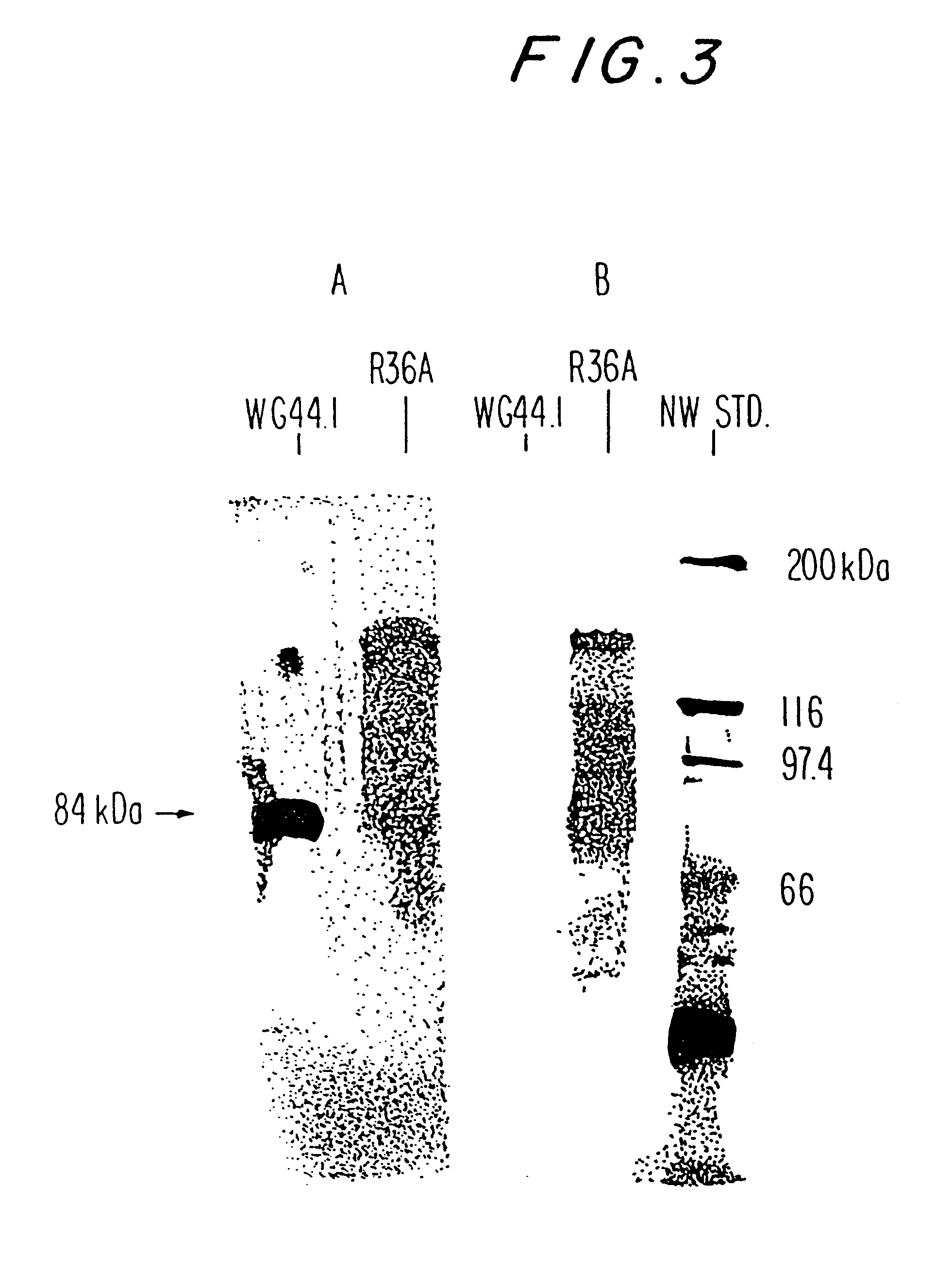Pneumococcal surface proteins and uses thereof
a surface protein and pneumococcal technology, applied in the field of isolated amino acid molecules, can solve the problems of insoluble products, difficult approaches, and inability of neonates and young children to make an immune response to polysaccharide antigens, and achieve the effect of increasing the shelf life of compositions
- Summary
- Abstract
- Description
- Claims
- Application Information
AI Technical Summary
Benefits of technology
Problems solved by technology
Method used
Image
Examples
example 1
Truncated Streptococcus pneumoniae PspA Molecules Elicit Cross-Protective Immunity Against Pneumococcal Challenge
Since the isolation of S. pneumoniae from human saliva in 1881 and its subsequent connection with lobar pneumonia two years later, human disease resulting from pneumococcal infection has been associated with a significant degree of morbidity and mortality. A recent survey of urgently needed vaccines in the developing and developed world places an improved pneumococcal vaccine among the top three vaccine priorities of industrialized countries. The currently licensed vaccine is a 23-valent composition of pneumococcal capsular polysaccharides that is only about 60% effective in the elderly and due to poor efficacy is not recommended for use in children below two years of age. Furthermore the growing frequency of multi-drug resistant strains of S. pneumoniae being isolated accentuates the need for a more effective vaccine to prevent pneumococcal infections.
The immunogenic nat...
example 2
Localization of protection-eliciting epitopes and PspA of S. pneumoniae
This Example, the ability of PspA epitopes on two PspA fragments (amino acids 192-588 and 192-299) to elicit cross- protection against a panel of diverse pneumococci is demonstrated. Also, this Example identifies regions homologous to amino acids 192-299 of Rx1 in 15 other diverse pneumococcal strains. The DNA encoding these regions was then amplified and cloned. The recombinant PspA fragments expressed were evaluated for their ability to elicit cross-protection against a panel of virulent pneumococci.
Bacterial strains and media conditions. S. pneumoniae strains were grown in Todd Hewitt broth with 0.5% yeast extract (THY) (both from Difco Laboratories, Detroit, Michigan) at 37.degree. C. or on blood agar plates containing 3% sheep blood at 37.degree. C. under reduced oxygen tension. E. coli strains were grown in Luria-Bertani medium or minimal E medium. Bacteria were stored at -80.degree. C. in growth medium sup...
example 3
Isolation of PspA and Truncated Forms Thereof, and Immunization Thereby
PspA is attached to the pneumococcal surface through a choline binding site on PspA. This allows for successful procedures for the isolation of FL-PspA. PspA can be released from the surface of pneumococci by elution with 2 percent choline chloride (CC), or by growth in a chemically defined medium (CDM) containing 1.2 percent CC (CDM-CC) or medium in which the choline had been replaced by ethanolamine (CDM-ET). Since CDM-ET supernatants lack high concentrations of choline, the PspA released into them can be adsorbed to a choline (or choline analog) column and isolated by elution from the column with 2 percent choline chloride (CC).
This Example describes the ability to obtain PspA by these procedures, and the ability of PspA obtained by these procedures to elicit protection in mice against otherwise fatal pneumococcal sepsis. Native PspA from strains R36A, RX1, and WU2 was used because these strains have been used...
PUM
| Property | Measurement | Unit |
|---|---|---|
| apparent molecular weight | aaaaa | aaaaa |
| pH | aaaaa | aaaaa |
| pH | aaaaa | aaaaa |
Abstract
Description
Claims
Application Information
 Login to View More
Login to View More - R&D
- Intellectual Property
- Life Sciences
- Materials
- Tech Scout
- Unparalleled Data Quality
- Higher Quality Content
- 60% Fewer Hallucinations
Browse by: Latest US Patents, China's latest patents, Technical Efficacy Thesaurus, Application Domain, Technology Topic, Popular Technical Reports.
© 2025 PatSnap. All rights reserved.Legal|Privacy policy|Modern Slavery Act Transparency Statement|Sitemap|About US| Contact US: help@patsnap.com



